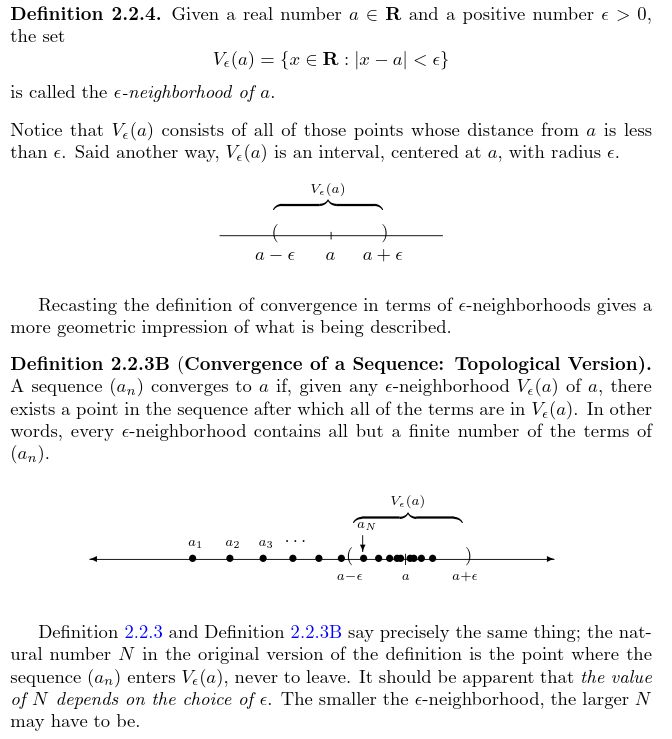Convergence of sequences of reals
Let \( L \) be a real number. A sequence of reals \( (a_n)_{n=m}^{\infty} \) is said to converge to \( L \) if for every real \( \varepsilon > 0 \) there exists an integer \( N \ge m \) such that \( |a_k - L| \le \varepsilon \) for all \( k \ge N \).
Expanded definition
The definition can also be approached in now familiar eventual ε-close progression.
ε-close
A sequences of reals \( (a_n)_{n=m}^{\infty} \) is said to be ε-close to \( L \) if \( a_k \) is ε-close to \( L \) for all \( k \ge m \).
eventually ε-close
The sequence is said to be eventually ε-close to \( L \) if \( a_k \) is ε-close to \( L \) for all \( k \ge N \) for some integer \( N \ge m \).
convergence
The sequence is said to converge to \( L \) if it is eventually ε-close to \( L \) for every \( \varepsilon > 0 \).
Rationals vs real sequences
Defining convergence of reals is another step towards defining a limit for reals, which will eventually subsume the original formal limit for rationals, \( LIM_{n\rightarrow} a_n \). For the set of reals, \( \mathbb{R} \), a sequence can approach an element of \( \mathbb{R} \). This is in contrast to the case with rationals, \( Q \), where Cauchy sequences would not necessarily approach a number that is an element of \( Q \); instead, the sequence is used to define a new number \( LIM_{n\rightarrow} a_n \).
Convergent sequences and Cauchy sequences of reals
So far, convergent sequences have been defined independently of any notion of Cauchy sequences of reals. So it has not yet be asked as to whether there is any relation between the two. Further cards will show that a sequence of reals is convergent if and only if it is a Cauchy sequence! We still need the idea of convergent sequences, as it allows us to create an identity between a convergent sequence and a real (aka a limit). The definition of Cauchy sequences in comparison only involves relative close-ness within the sequence and not closeness to some other number, thus it cannot be used to create an equality with a real.
Topological perspective of convergence

Context
Cauchy sequences of reals → convergence of sequences of reals → uniqueness of convergence → limit, the definition → subsumption of formal limits
